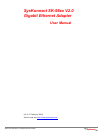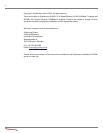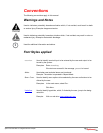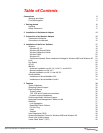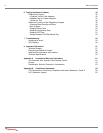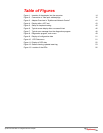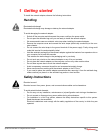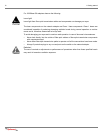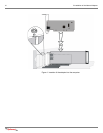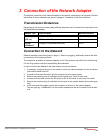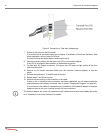
SysKonnect SK-98xx V2.0 Gigabit Ethernet Adapter
1 Getting started
To install the network adapter, observe the following instructions.
Handling
To avoid damaging the network adapter:
• Switch off the computer and disconnect the power cord from the power outlet.
• Do not open the antistatic bag until you are ready to install the network adapter.
• We recommend to wear an antistatic wrist strap when installing the network adapter.
• Remove the computer cover and connect the wrist straps (electrically conductive) to the com-
puter chassis.
• Do not connect the wrist strap to the ground terminal of the power supply. Faulty wiring could
make this terminal live and potentially lethal.
• Hold the antistatic packaging of the network adapter against the bracket of an expansion slot on
your computer for at least two seconds.
This reduces the static charge in the packaging and in your body.
• Do not touch any circuits on the network adapter or any of its port contacts.
• Do not place the network adapter on the computer cover or any other metal surface.
• Do not allow anyone else to touch the network adapter.
• Avoid unnecessary movement since this can increase electrostatic charge.
• Never use force when working with the network adapter or the PCI bus.
• If you need to place the network adapter somewhere after removing it from the antistatic bag,
make sure that you place it on the antistatic bag and on a level surface.
Safety Instructions
To avoid potential shock hazards:
• Do not carry out any installation, maintenance or (re)configuration work during a thunderstorm.
• Do not connect or disconnect any power cables during a thunderstorm.
• For installation in a Hot Plug system, observe the safety instructions specific to this system.
Read the relevant documentation.
Electrical installations must comply with the safety regulations of the country in which they are
operated.
Electrostatic discharge!
Electrostatic discharge may damage or destroy the network adapter.
Electrical current!
Electrical current from power, phone, and communications cables can be hazardous.



